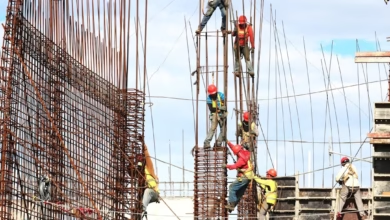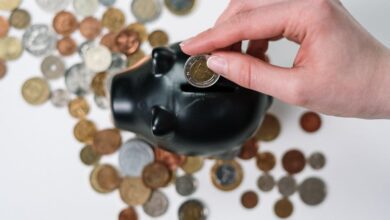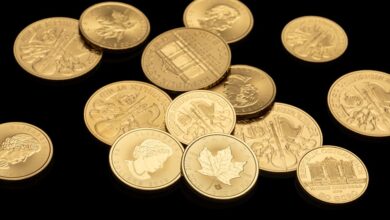Metals in Motion: Analyzing Trends, Demand, and Investment Opportunities in Today’s Markets

In an increasingly interconnected global economy, the dynamics of metal markets play a crucial role in both industrial applications and investment strategies. This article explores the multifaceted world of metals, starting with silver, which serves as both a vital industrial resource and a popular investment vehicle. We will delve into copper's price movements as indicators of economic health, examining how shifts in demand reflect broader global trends. Additionally, we will investigate the surging demand for rare earth metals driven by green energy technologies and assess the investment potential of platinum compared to palladium.
As inflation continues to influence the market, understanding the implications for both precious and industrial metals becomes essential for investors seeking diversification. Furthermore, we will consider the future of aluminum in a sustainable economy, alongside the impact of mining regulations on metal prices. This comprehensive analysis aims to provide insights into how these metals can shape investment portfolios and reflect the evolving economic landscape. Join us as we navigate the intricate relationships within the metal markets and uncover the opportunities they present for both industry and investors alike.
- 1. "Navigating the Metal Markets: Silver's Dual Role in Industry and Investment"
- 2. "Copper's Economic Pulse: Understanding Price Trends and Global Health Indicators"
- 3. "Rare Earths and Renewables: The Green Energy Revolution's Demand Surge"
1. "Navigating the Metal Markets: Silver's Dual Role in Industry and Investment"
Silver plays a unique dual role in the markets, serving both as a critical industrial metal and a sought-after investment asset. In the industrial sector, silver is highly valued for its exceptional conductivity, thermal efficiency, and antibacterial properties. It is widely used in electronics, solar panels, medical devices, and various manufacturing processes. As the global push towards renewable energy and advanced technologies increases, demand for silver in these applications is expected to rise, particularly in the burgeoning solar energy market, where silver is essential for photovoltaic cells.
On the investment side, silver is often viewed as a safe-haven asset, similar to gold. Investors turn to silver during times of economic uncertainty or inflation, as it tends to retain value when fiat currencies weaken. The metal’s relatively lower price compared to gold makes it an accessible option for a broader range of investors. Additionally, silver is traded in various forms, including bullion, coins, and exchange-traded funds (ETFs), providing flexibility for different investment strategies.
The interplay between these two roles creates a dynamic market influenced by a variety of factors, including industrial demand, investment trends, and macroeconomic conditions. For example, a surge in industrial demand can lead to higher prices, which may attract speculative investment, further driving up prices. Conversely, during economic downturns, if industrial demand wanes, silver may still find support from investors seeking to hedge against currency fluctuations.
Navigating the metal markets requires an understanding of these dual pressures. Investors must consider both the long-term industrial applications of silver and its historical performance as a store of value. This duality not only enhances silver's appeal but also adds complexity to its price movements, making it a fascinating subject for both industrial stakeholders and investors alike.
2. "Copper's Economic Pulse: Understanding Price Trends and Global Health Indicators"
Copper, often referred to as "Dr. Copper" due to its ability to indicate economic health, serves as a crucial barometer for global economic conditions. The price trends of copper are closely linked to industrial activity and overall economic growth. When economies expand, the demand for copper rises, driven by its extensive applications in construction, electrical wiring, and various manufacturing processes. Conversely, during economic downturns, demand typically wanes, leading to falling prices.
Recent years have shown that copper prices can reflect broader economic indicators, such as manufacturing output, housing starts, and infrastructure investment. For instance, a surge in copper prices often coincides with increased construction and manufacturing activities, signaling robust economic performance. Conversely, declining prices may suggest a slowdown in these sectors, often foreshadowing broader economic challenges.
Global events, such as trade tensions, geopolitical instability, and shifts in energy policies, also impact copper prices. For example, the transition towards renewable energy and electric vehicles has spurred demand for copper, as these technologies require substantial amounts of the metal for wiring and components. As countries invest in green technologies, the copper market is likely to experience fluctuations, reflecting both immediate supply and long-term demand projections.
Moreover, the influence of large economies, particularly China, cannot be overlooked. As the world’s largest consumer of copper, China's economic policies and growth trajectories play a significant role in shaping global copper prices. Changes in Chinese infrastructure spending or manufacturing output can lead to rapid adjustments in copper prices, impacting markets worldwide.
In summary, monitoring copper prices provides valuable insights into global economic health. Investors and analysts keenly observe these trends to gauge potential economic shifts, making copper a vital indicator in the analysis of market conditions and economic forecasts.
3. "Rare Earths and Renewables: The Green Energy Revolution's Demand Surge"
The transition to renewable energy sources is driving an unprecedented surge in demand for rare earth metals, which are crucial for the production of advanced technologies that facilitate this green energy revolution. Rare earth elements (REEs) such as neodymium, dysprosium, and lanthanum are essential components in the manufacturing of high-performance magnets, batteries, and catalysts used in electric vehicles (EVs), wind turbines, and solar panels.
As countries strive to reduce their carbon footprints, the push for electric mobility and renewable energy systems has intensified. For instance, neodymium-iron-boron magnets, which rely on neodymium, are vital for wind turbines and electric motors, making these metals indispensable for the expansion of clean energy infrastructure. The International Energy Agency (IEA) projects that the demand for rare earths will continue to rise significantly as the global market for EVs grows, with millions of new electric vehicles expected to be on the roads in the coming years.
This surge in demand has led to increased scrutiny of the supply chain for rare earth metals, which is often concentrated in a few countries, particularly China. As a result, there is a growing emphasis on developing alternative sources and recycling methods to ensure a stable supply. Additionally, the environmental impact of rare earth mining is a concern, prompting calls for more sustainable practices in extraction and processing.
Investors are paying close attention to the rare earth market, recognizing its potential for long-term growth driven by the renewable energy sector. As governments and corporations commit to ambitious climate targets, the strategic importance of rare earth metals is likely to increase, making them a critical component in the transition toward a more sustainable economy. This evolving landscape underscores the interconnectedness of technological advancement, environmental sustainability, and global economic dynamics, positioning rare earths at the forefront of the green energy revolution.
In conclusion, the intricate dynamics of the metals market reveal a multifaceted landscape where industrial applications and investment opportunities intertwine. Silver's unique status as both a crucial industrial component and a popular investment asset underscores its versatility and resilience in fluctuating markets. Similarly, copper prices serve as a barometer for global economic health, reflecting broader trends that influence investor sentiment and market stability.
The rise of green technologies is reshaping the demand for rare earth metals, highlighting the critical role these resources play in advancing sustainable energy solutions. In the ongoing debate between platinum and palladium, investors must weigh factors such as market volatility, supply constraints, and industrial demand to make informed decisions.
As we consider the broader implications of metals in investment portfolios, it's clear that diversification remains a key strategy for managing risk, particularly in an environment shaped by inflationary pressures that can significantly impact metal prices. The future of aluminum also presents promising opportunities, especially as the push for sustainability continues to gain momentum.
Finally, we must acknowledge the influence of mining regulations on metal prices, which can create both challenges and opportunities for investors and industry stakeholders alike. As we look ahead, staying attuned to these developments will be essential for navigating the complex interplay of supply, demand, and economic indicators in the ever-evolving metals market.





